Set in the landscape of the Marche region, the village of Gradara-famous for the castle where Dante set the tragic love story of Paolo and Francesca-hosts at MARV - Museo d’Arte Rubini Vesin, the first major solo exhibition in Italy by Japanese artist Keita Miyazaki. The exhibition, titled Post-Apocalyptic Bloom, curated by Riccardo Freddo and Luca Baroni in collaboration with Gallery Rosenfeld, will open to the public on June 6 and continue until July 6, 2025.
Thereafter, from July 7 to Sept. 6, 2025, the exhibition will move to the Rocca, continuing a journey that interweaves history and contemporaneity. Gradara, in recent years, has been able to transform itself into a laboratory of cultural rebirth, just as it does in Miyazaki’s works. The sculptures selected for this exhibition highlight his sculptural language, in which destruction and regeneration come together, mixing mechanics and nature, and shaping a post-apocalyptic garden.
The Japanese artist works by combining industrial materials, such as decommissioned engines, metals, and gears, with delicate, handcrafted materials, such as hand-folded paper, felt, and textiles, evoking the wabi-sabi aesthetic, which celebrates the beauty of imperfection and the ephemeral. Her works tell of a world that, though devastated, finds the strength to flourish again, transforming wrecks into symbols of rebirth.
“With paper I want to make my works flourish,” Miyazaki states. And this verb, “to bloom,” ties in perfectly with the narrative magic of Gradara, which becomes the ideal backdrop for an art project capable of rediscovering the beauty of reuse, fragmentation and change. Like the flowers that emerge from its sculptures, contemporary art flourishes within the ancient walls of this village. Post-Apocalyptic Bloom aims to transform the exhibition space into a fascinating mechanical and poetic garden, where the memory of industry and the delicacy of nature intertwine.
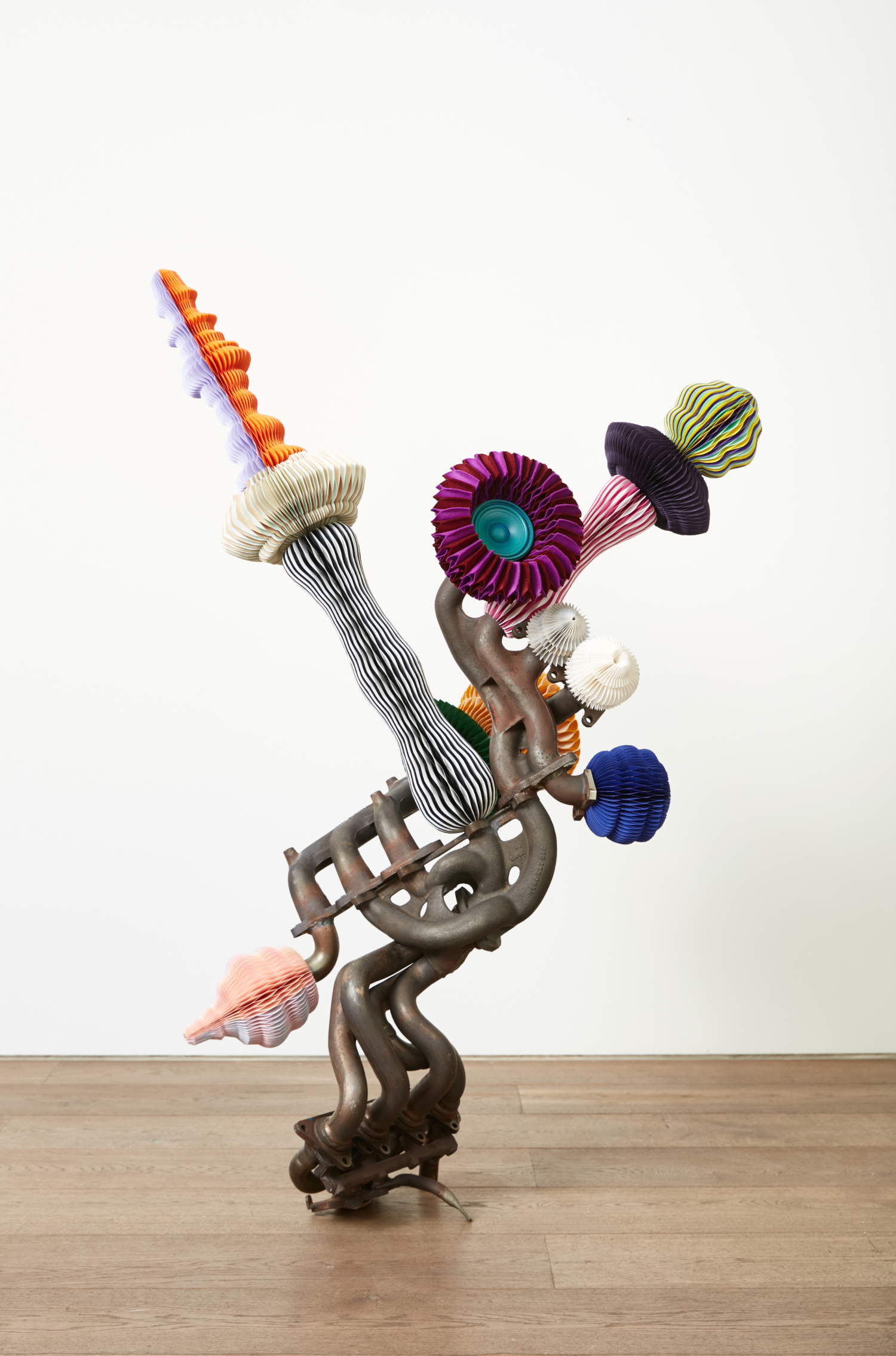
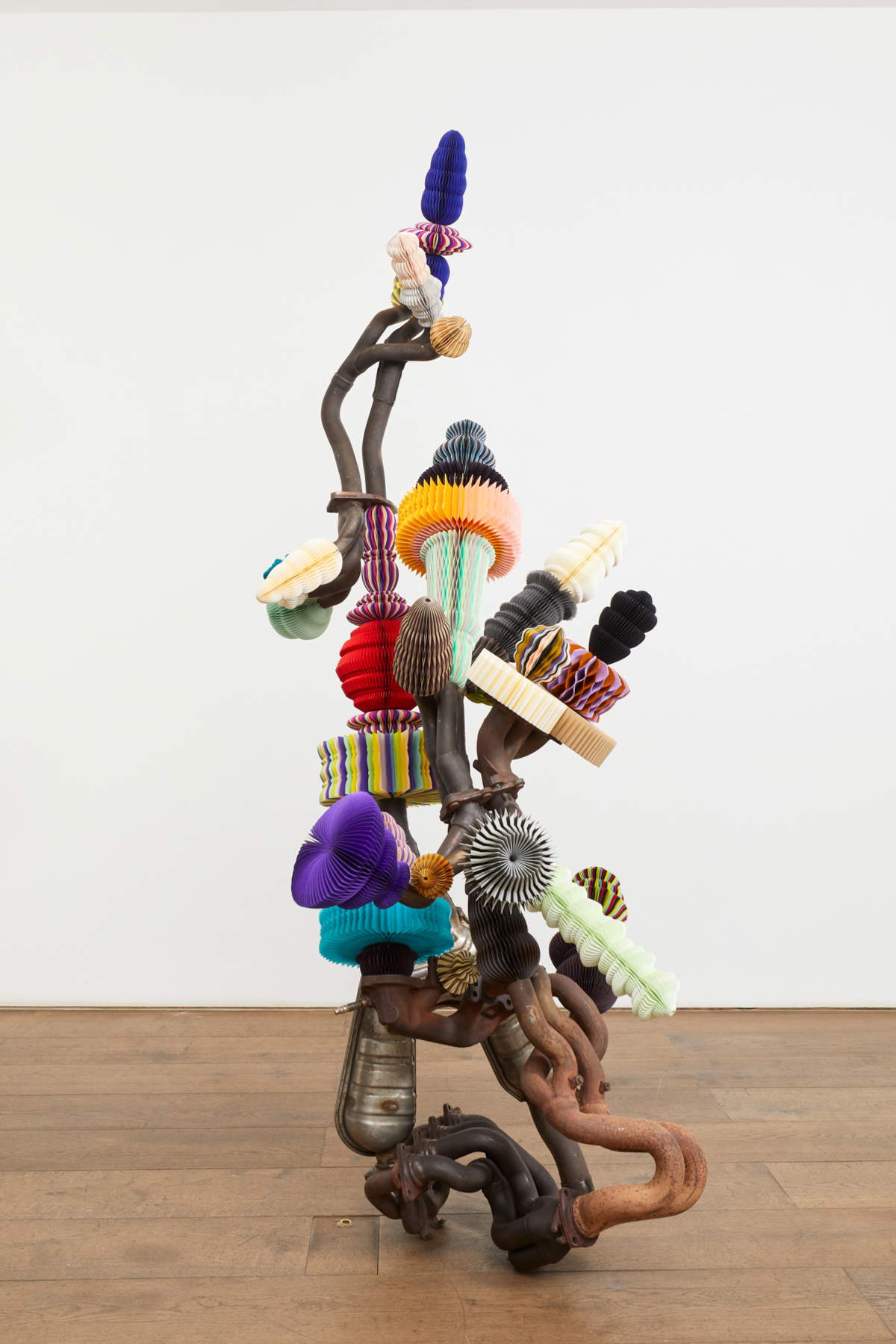
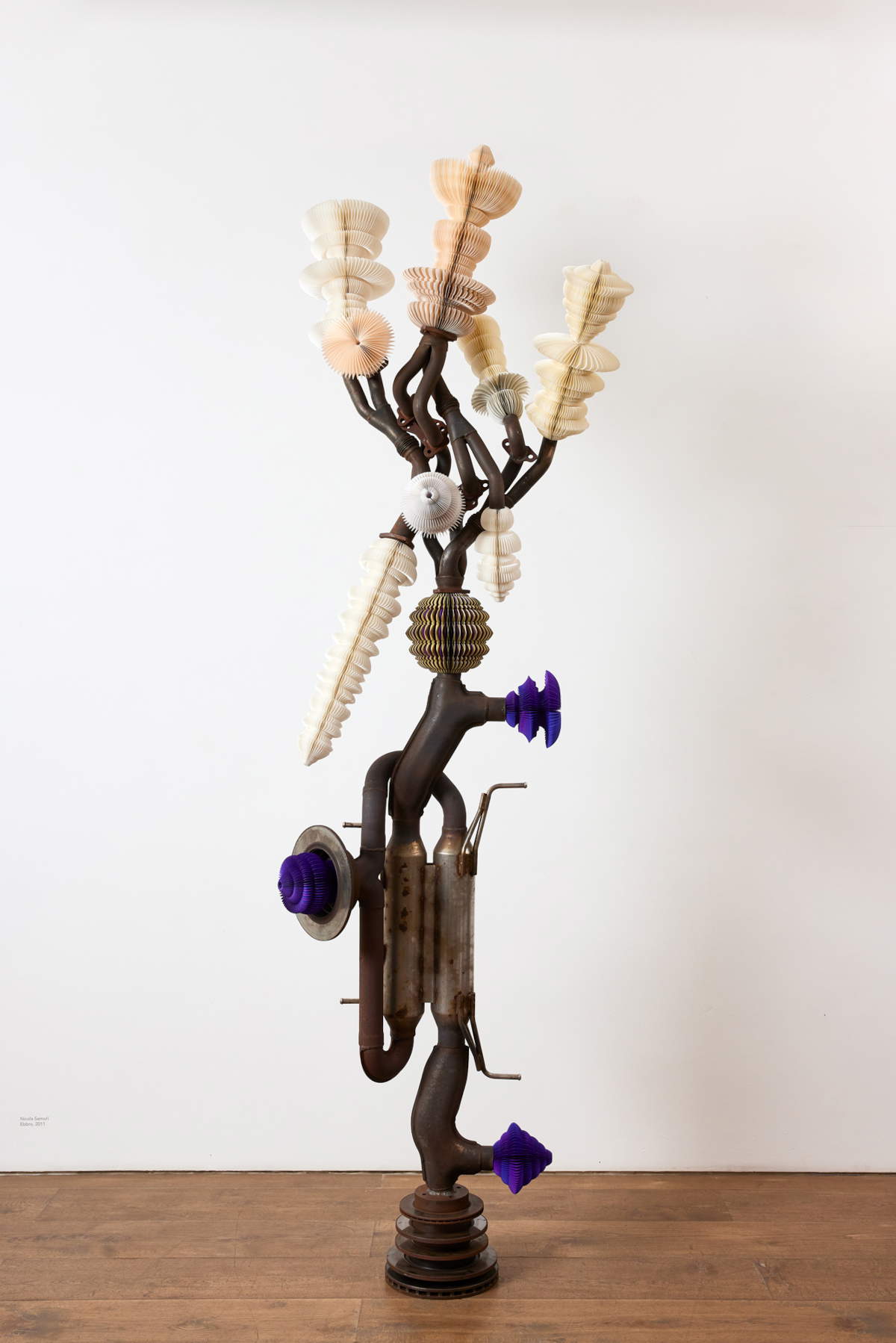
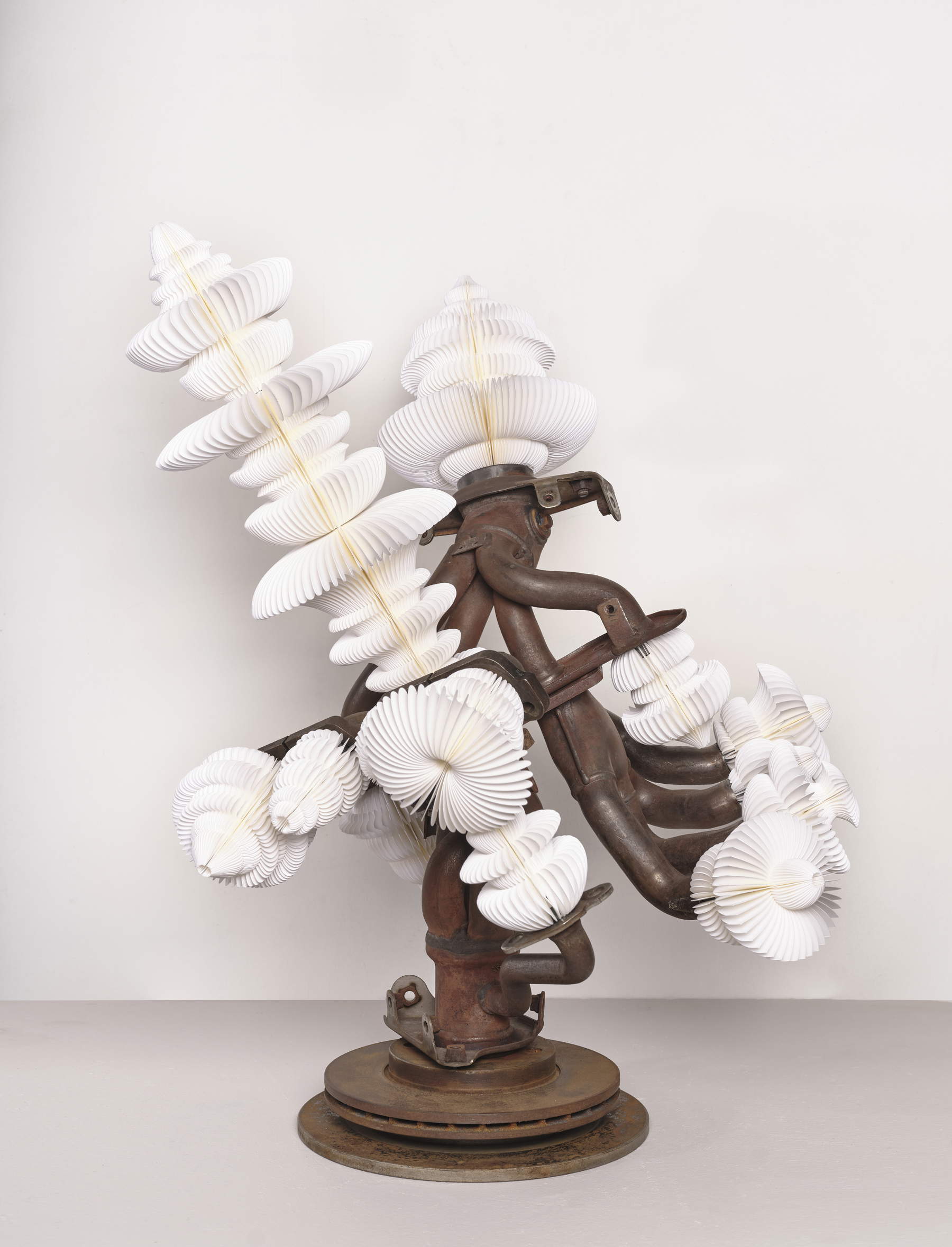
Keita Miyazaki, who has already exhibited in major institutions such as the Victoria and Albert Museum, the Centre Pompidou, the Jameel Arts Centre and the Palais de Tokyo, and whose works are part of prestigious international collections in Europe, Asia and the United States, brings his sculptural language to the medieval walls of Gradara.
“Keita Miyazaki’s works strike me deeply for their melancholic harmony,” said curator Riccardo Freddo. “There is in them a fragile and imperfect beauty that recalls the Japanese philosophy of wabi-sabi: a sad, incomplete beauty that accepts time, asymmetry and decay as essential elements. His sculptures do not seek a classical balance or an accomplished form as in European sculptural traditions, but are rooted precisely in the idea that beauty can also arise from flaw, error, imperfection It is in this tension that the poetic force of his work is released.”
Born in Tokyo in 1983, Miyazaki is a visual artist who lives and works between the Japanese capital and London. His hybrid sculptures, which combine industrial materials and craft techniques, shape a unique language in which mechanical fragments and natural motifs dialogue and contaminate each other. A graduate of Tokyo University of the Arts and the Royal College of Art in London, he has exhibited his work in institutions and galleries around the world.
Photo works courtesy of Gallery Rosenfeld
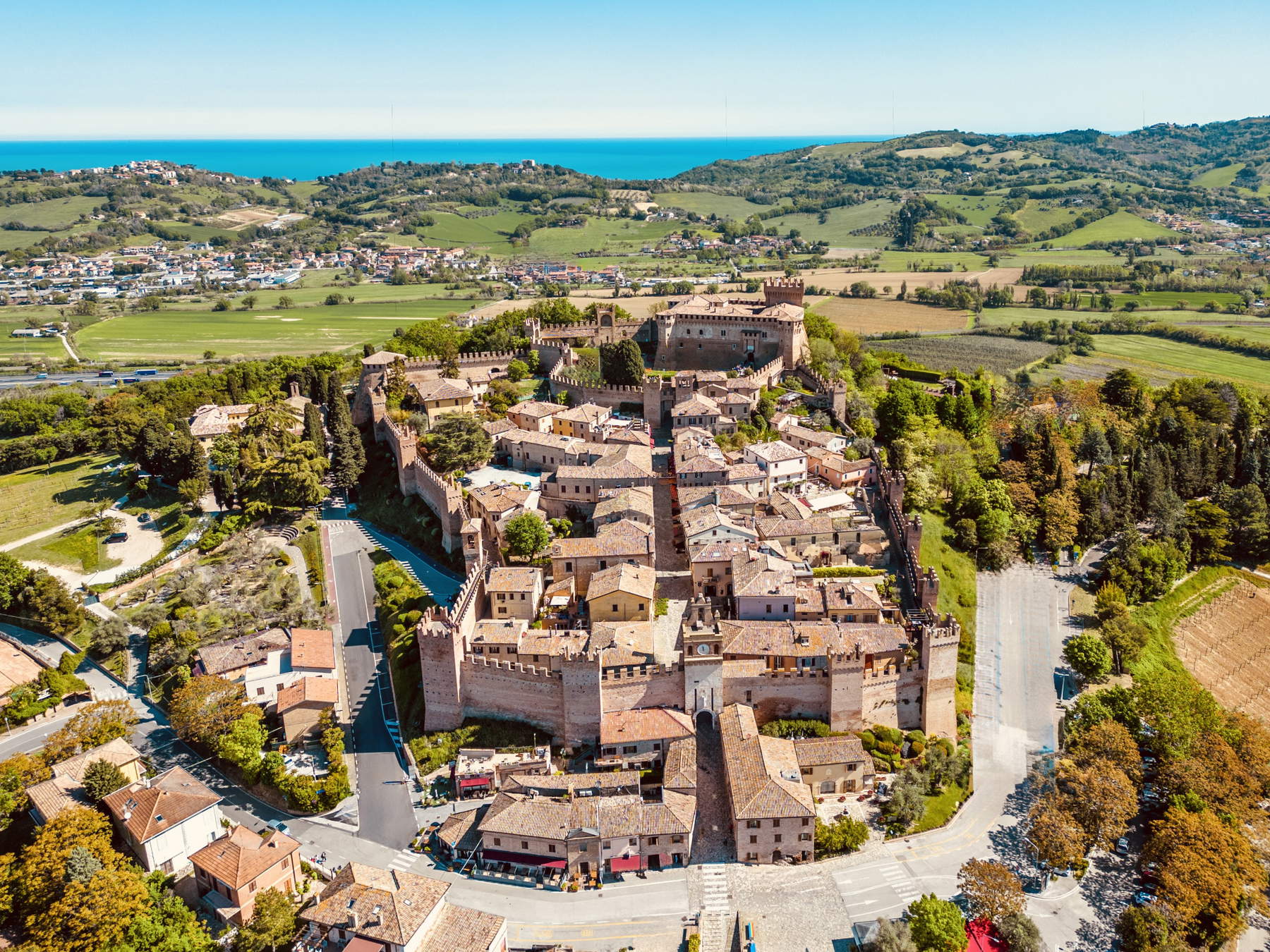
 |
| In Gradara, Keita Miyazaki's first Italian solo exhibition evokes wabi-sabi philosophy |
Warning: the translation into English of the original Italian article was created using automatic tools. We undertake to review all articles, but we do not guarantee the total absence of inaccuracies in the translation due to the program. You can find the original by clicking on the ITA button. If you find any mistake,please contact us.